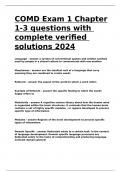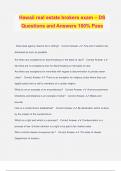Tentamen (uitwerkingen)
PLATINUM FINAL EXAM EMTP 3.3 REVIEW 2023 QUESTIONS AND ANSWERS COMPLETE
- Vak
- Instelling
PLATINUM FINAL EXAM EMTP 3.3 REVIEW 2023 QUESTIONS AND ANSWERS COMPLETE What is the best airway device to use for smoke inhalation? Endotracheal intubation is frequently needed for supportive therapy in the management of inhalation injury. Most pertinent piece of information in evaluating a pa...
[Meer zien]












